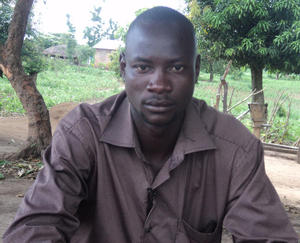In an effort to improve functionality of water systems the Lira District Hand Pump Mechanics Association has introduced a new approach to prompt water users to demand operation and maintenance services.
Published on: 21/07/2014
Functionality of rural water systems remains a big challenge and an impediment to reliable rural water services in Northern Uganda. The Water and Environment Sector Performance Report of 2013 (SPR 2013) indicates that 331 water supply systems are non-functional just in Lira District alone, implying that over 9000 users mainly women and children walk more than 1km to access safe water. On average, 5000 water systems are non-functional at any given moment in Northern Uganda-representing 27% of national percentage on non-functionality.
In an effort to contribute towards improved functionality of rural water facilities in Lira District the district Hand Pump Mechanics Association (HPMA) has introduced a Demand Driven Drive (3D Approach) to trigger community demand for routine Operation and Maintenance (O&M) services.

According to the Lira HPMA chairperson, the conviction emanates from the capacity support that Triple-S has been giving the HPMA especially to become proactive in seeking for business opportunities. The 3D Approach entails a concerted O&M movement by the HPMs as service providers. The approach is unique in the sense that it triggers community action and demand for accountability and transparency for O&M funds from the Water and Sanitation Committees (WSC).
The 3D Approach comes with a twofold advantage: it increases the interest of water users to contribute O&M funds and demand accountability from WSCs. It also gives the WSC an opportunity to demonstrate transparency by account to the users.
Under their new 3D Approach, Lira HPMA organised one month’s O&M service provision campaign to all the nine sub-counties in the district. The campaign ran from 7th to 30th April 2014. To kick-start the exercise the HPMA issued an advertisement informing all the sub-counties that they would be undertaking routine O&M services of rural water facilities.
The adverts were extensively circulated through various community structures including extension teams, parish chiefs, Village Local Councils (LCI), churches, markets and schools. Communities were advised to place their requests at the sub-county authorities. The O&M services would be offered on a “first come-first serve” basis. In addition, the HPMA issued a criterion that favoured active WSCs. To qualify out rightly, a water source should have an active WSC with updated financial records and funds to procure spare parts when needed.
The wide circulation of the advertisement and the clear criteria triggered the communities to demand for O&M services. Soon enough the sub county authorities were inundated with community requests and they continue to receive more. From the first drive of the Lira HPMA’s 3D Approach, it is reported that at least 90 water supply systems were serviced. The HPMA has since received many more community requests for the services.
The success of this approach is largely attributed to the commitment and strong will of sub-county authorities - who supported the process by engaging all relevant structures including the extension teams, parish chiefs and local councils to back-up the Hand Pump Mechanics (HPMs). It was also noted that sub-counties that have SWSSBs were more effective in this campaign as opposed to those without boards.
This approach by Lira HPMA also depicted growth in the association. They are proactively seeking business opportunities and becoming more viable entities. The success also demonstrates the trust that the HPMA is beginning to gain among the lower level community structures.
Integration of hygiene and sanitation in this campaign was recognized as a pull factor for especially village health teams, extension staff, Local councils and the water users. Besides receiving accountability on O&M funds, water users actively participated in cleaning up the surrounding of the water facility including opening up blocked soak pits and protecting the source from possible contamination.
The District Water Office has hailed the effort of Lira HPMA and wants to promote the 3D Approach by adopting it to run as the essence of a “Functionality Week” coinciding with the sanitation week. Jimmy Otim, the Assistant Water Officer expresses optimism about the approach saying, “We are going to present a proposal to the DWSCC to have a functionality and sanitation week/month either biannually or quarterly. During this period we shall apply the 3D Approach with the aim of improving O&M.”